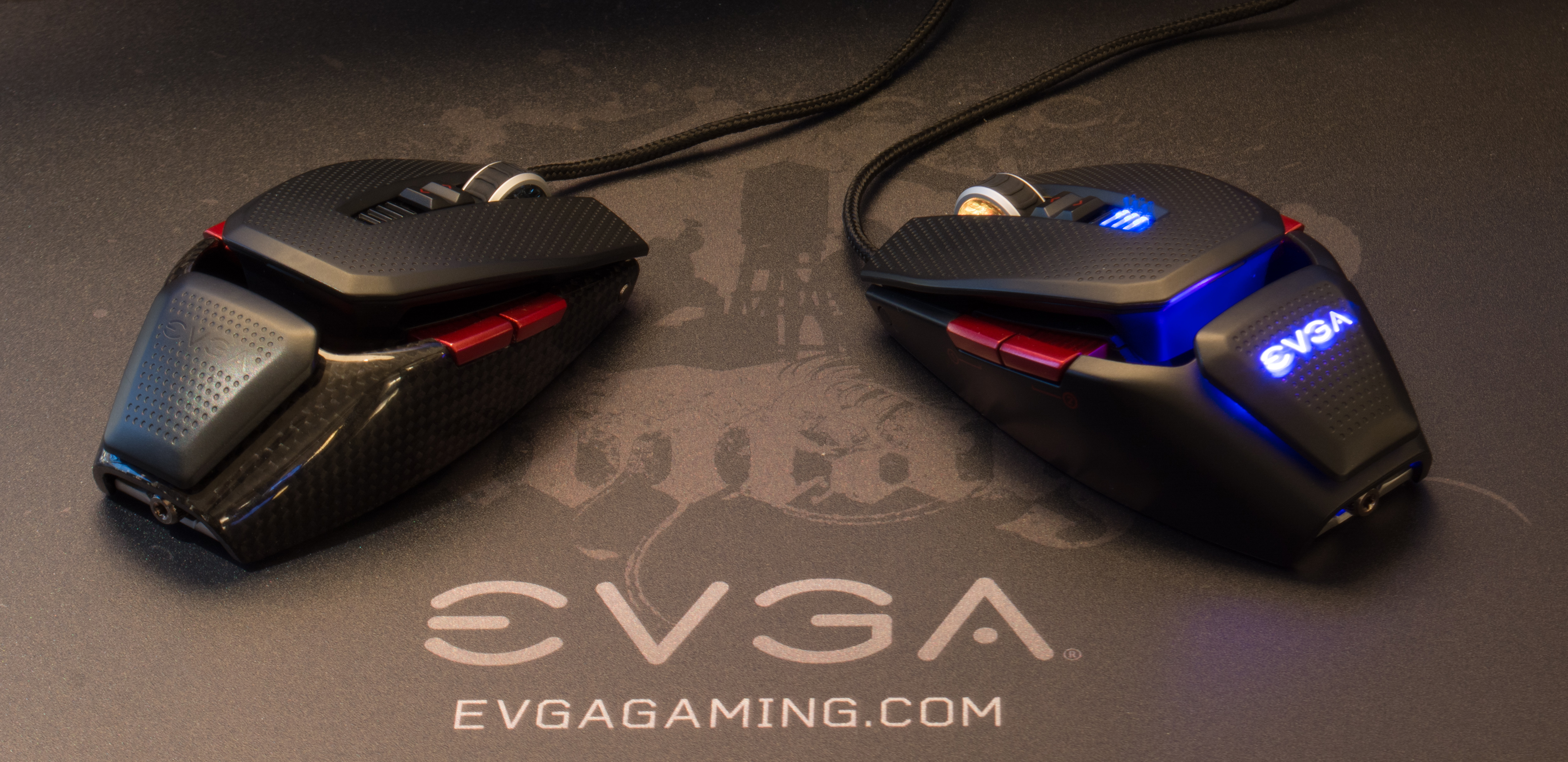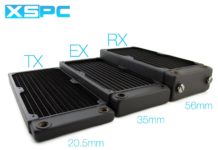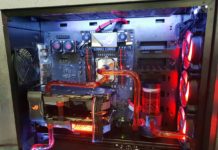We have a video tour coming – but here’s a summary otherwise. Without a major CPU/GPU release there was little new hardware to show, however EVGA still had some new gear to show anyway:
Hadron Hydro
Yes we’d seen the plain old Hadron Air before – a mITX case with a built in 500W gold rated power supply. EVGA chose CES to launch the hadron hydro which is the same case but with the top extended a bit to make room for a 240 radiator:
It looks a bit uglier because of this kind of chop shop look, particularly in the back where adapters had to be used to move the coolant into the top chamber:
However if you want something legitimately small with water cooling support then it is one of the few options.
It retails for $210 which includes the power supply but not the water cooling. The watercooling kit can be bought for another $180. While I personally think a 240 radiator is a bit too little for CPU and GPU, EVGA were happy to show a stock titan running benchmarks that did not exceed 42C. So this is a nice little portable rig, but I would still choose lower power components like a 4670K and a 780 and run with mild overclocks rather than say a 4770K and a 290x.
Dat Classy K|ngP|n Edition
Yeah this one is a few weeks old really, but it was the first time we saw it in the flesh, and the plexi shroud doesn’t look half bad. It’s not as long as the 290 Lightning but it’s still a beast of a card. There was a naked card but before we could take pics K|ngP|n stole it to go mod and bench it. Enjoy the pics:
Oh and the regular classy – hard to imagine why you wouldn’t spend the extra money for the K|ngP|n edition just to get the better binned chips:
Oh and a shot of the X79 dark because it really is a sexy board (EK Y U MAKE BLOCKS FOR EVERY BOARD BUT THIS):
Mice
Yes EVGA are getting into peripherals, although they showed a picture of a possible keyboard that may be released only mice were actually ready for CES. All the mice internals are the same and they all have the same high resolution (8200 DPI) and high polling rates (1ms).
The differences are the externals. There are three versions – the top of the line is the Torq X10 which comes in regular and (actual not vinyl) carbon fiber version:
The Torq X10 is the high end version because it can be adjusted to better suit the shape of your hand. Turning a torx head screw in the base causes the two halves of the top cover to split up and apart for larger hands. In addition the weight is customizable too, as well as the LED colors, intensity etc. The software also allows you to adjust sensitivity on the fly between your custom profiles and will post the DPI settings to the screen so you don’t have to look down at your mouse to see which one you’re in. Individual profiles can be customized for each game and auto selected when the game is launched. This one should retail around $110 which seems reasonable for all the features.
The cheaper versions lose some of this customization. There are two lower versions – the medium range Torq has some non interchangable colored parts and leds:
It comes in three versions:
And has reduced size teflon pads compared to the X10:
The cheapest version looks the most boring, but may be a bargain depending on final price:
The LEDs in each of those are different (red, green blue) though you can’t tell from the photo.
Power Supplies
EVGA have released a lot of new power supplies in the last 2 years. First the NEX1500, then 650G/B, 750G/B. At that point I though they’d add a 1000W and call it a day. But they switched OEM, removed the 1 to 1 wiring that makes the power supply easy to sleeve and released the 1300G2, the 1000P2/G2, the 600B, 500B, 500 and 430. So in other words just about every single product you might ever need with some major overlap. Now, presumably unhappy with the original OEMs design on the 750G they are releasing the 750G2 and 850G2 from the same OEM as the 1000W supplies (FSP vs Aurum). These are supposed to be higher quality than the original 750G. However the major selling point to me on the 750G was that the modular connectors on the PSU were the same as the other end of the supply, e.g. for super short wiring you could just use an extension and it was also super easy to build your own custom cables. This has changed with the new version which means that for these to sell well they’ll either have to be super efficient, or very aggressively priced as I see no other competitive advantage. They do now have an eco mode where the fan won’t turn on until a certain power threshold is crossed, and the fan will also keep on for 30 seconds after the computer is shutdown to cool off any residual heat. These are nice features but hardly game changers that are going to make a Corsair fanboy think twice.
That’s it for now! Video to come soon 🙂
































